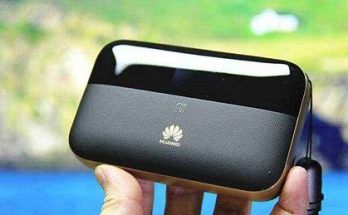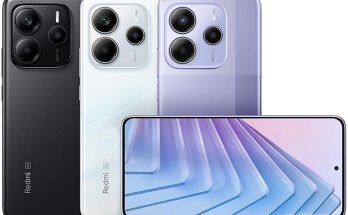Samsung has always been a leader in consumer electronics and smartphone technology, known for innovation and cutting-edge features, However, the company’s recent upgrade policies and decisions have sparked mixed reactions among users and experts alike.
Let’s investigate these changes and assess whether Samsung’s Upgrade Decisions benefit or hinder Samsung’s long-standing reputation.

Key Changes in Samsung’s Upgrade Policies:
Samsung has recently made several decisions regarding upgrades that are worth examining:
- Focus on Premium Features
- Hardware Customization
- Gradual Transition to Eco-Friendly Designs
- Shift in Manufacturing Locations
The Pros and Cons of Samsung’s Decisions
| Aspect | Positive Implications | Negative Implications |
|---|---|---|
| Extended Software Support | – Encourages device longevity. – Keeps older models secure and updated longer. – Benefits business and enterprise users. | – Updates for older devices may slow down performance. – Mid-range devices often miss out on flagship features. |
| Exclusive Premium Features | – Enhances the appeal of flagship models. – Provides a superior experience to premium users. – Drives demand for high-end devices. | – Alienates mid-range users. – May lead to accusations of planned obsolescence for budget devices. |
| Eco-Friendly Practices | – Reduces environmental impact. – Aligns with global sustainability trends. – Appeals to eco-conscious customers. | – Removing accessories like chargers can feel cost-cutting rather than eco-friendly. – Adds inconvenience for some users. |
| Hardware Customization | – Gives consumers more control over device specs. – Appeals to niche markets like gamers and creators. – Strengthens brand loyalty. | – Limited availability in certain regions. – Customization adds to production costs, raising retail prices. |
| Shift in Manufacturing | – Lowers production costs, which can be reinvested in innovation. – Diversifies supply chain risks. | – Potential quality inconsistencies. – May raise concerns over labor practices in new manufacturing hubs. |
Comparisons with Competitors

Software Updates:
| Samsung | Apple | |
|---|---|---|
| 4 years of Android updates, 5 years of security updates. | 5-6 years of iOS updates, longer security support. | 3 years of Android updates, 5 years of security updates. |
| Covers both flagship and mid-range models. | Focus on seamless upgrades across all devices. | Timely updates for Pixel devices only. |
| Software innovations often delayed for mid-range. | Uniform experience across all devices. | Limited to a smaller device lineup. |
Hardware Updates:
| Samsung | Apple | |
|---|---|---|
| Offers extensive customization options for foldable and flagship phones. | Minimal customization available. Users choose from pre-set configurations. | Very limited customization, focused on uniformity. |
| Tailored to regional preferences. | Standardized to maintain ecosystem harmony. | Focused more on software than hardware. |
Eco-Friendly Policies:
| Samsung | Apple | |
|---|---|---|
| Recyclable materials, reduced packaging, and no chargers in some models. | Pioneered no-charger policy, use of recycled aluminum and rare earth metals. | Eco-friendly materials but less extensive in implementation. |
| Focused on broad implementation across devices. | Strong commitment to net-zero carbon emissions. | The gradual adoption of eco-friendly measures. |
Conclusion: Good or Bad?
For users, the value of these changes depends on personal priorities—whether they prioritize long-term software support, premium features, or eco-friendliness.
By addressing user concerns and refining its strategies, Samsung can ensure its upgrade decisions benefit a broader audience.
FAQs:
What is Samsung’s new software update policy?
Samsung now provides four years of Android upgrades and five years of security updates for its flagship and mid-range devices. This includes models like the Galaxy S series, Z series, and some A-series phones. This policy is intended to enhance device longevity and user security.
Are Samsung’s eco-friendly initiatives removing chargers from all devices?
Samsung has removed chargers and earphones from the packaging of some devices, citing environmental sustainability. However, not all devices are affected, and this practice is primarily applied to new flagship and mid-range models.
Why are premium features being limited to flagship models?
Samsung aims to differentiate its high-end devices from mid-range options by reserving innovations like advanced cameras and exclusive software features for the Galaxy S and Z-series. This strategy is intended to drive demand for flagship products.
How does Samsung’s update policy compare to its competitors?
Samsung’s update policy is one of the best among Android manufacturers, providing four years of major updates. However, Apple still leads with over five years of iOS updates for iPhones, offering a seamless experience across all devices.
What hardware customization options are available for Samsung devices?
Samsung allows hardware customization for certain devices, especially foldable phones like the Galaxy Z Fold and Flip. Users can select RAM, storage configurations, and sometimes color schemes. Availability may vary by region.
Does the shift in Samsung’s manufacturing locations affect device quality?
While cost optimization through new manufacturing hubs can impact quality, Samsung has strict quality assurance measures in place to mitigate such risks. However, user experiences may vary depending on specific device batches and regions.
How do Samsung’s decisions impact the mid-range market?
Mid-range devices receive extended software support but lack some premium features, leading to mixed reactions. While these decisions ensure affordability and longevity, some users feel the gap between mid-range and flagship models is widening.
For more detailed insights into Samsung’s policies and their implications, stay tuned





I have noticed that in video cameras, specialized detectors help to concentrate automatically. The actual sensors regarding some digital cameras change in in the area of contrast, while others work with a beam involving infra-red (IR) light, specifically in low lighting. Higher spec cameras often use a blend of both systems and probably have Face Priority AF where the digital camera can ‘See’ a face as you concentrate only on that. Many thanks for sharing your ideas on this blog site.
I just could not depart your site before suggesting that I extremely enjoyed the standard information a person provide for your visitors? Is going to be back often to check up on new posts